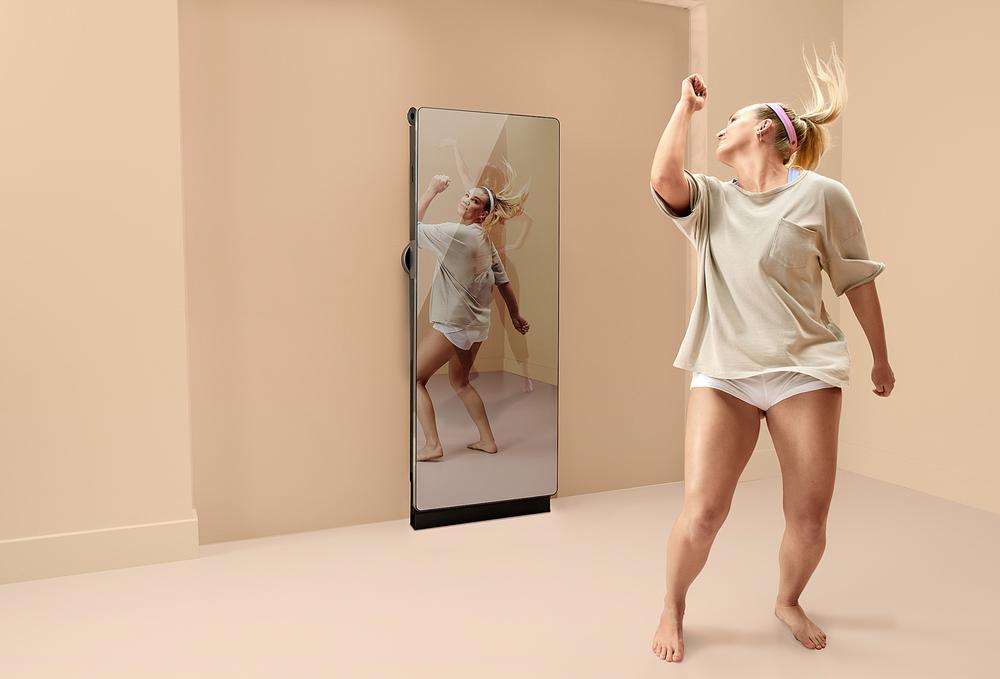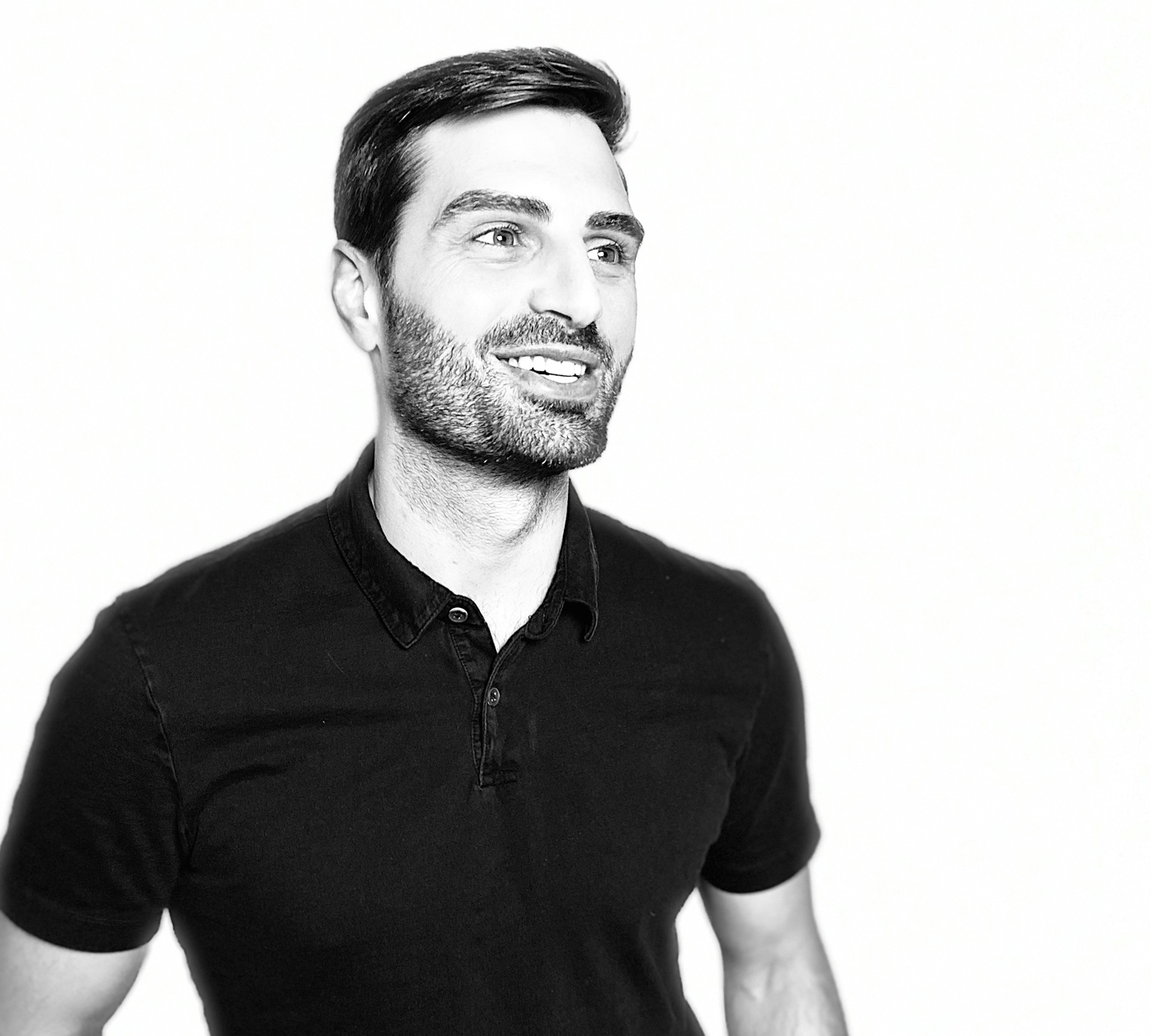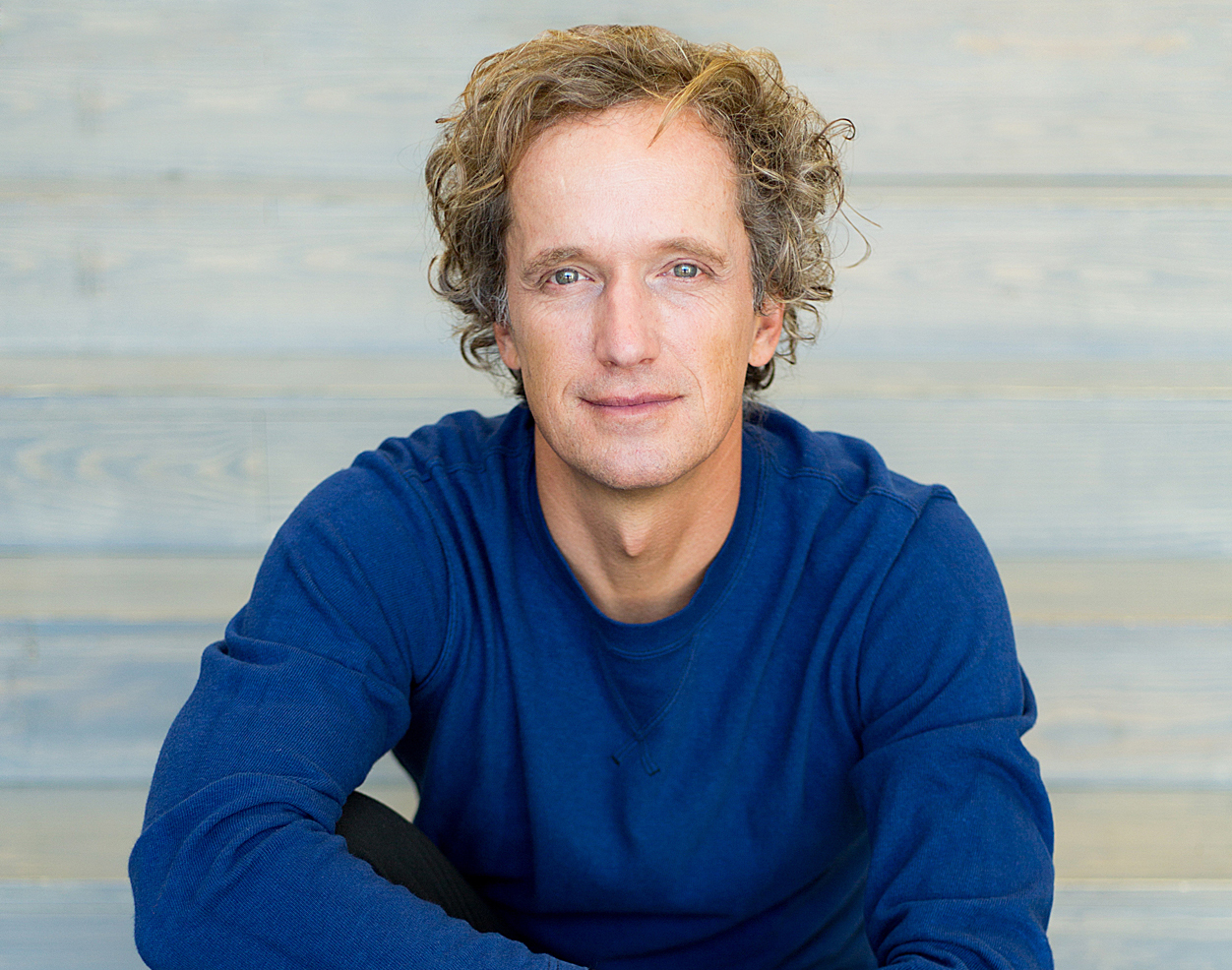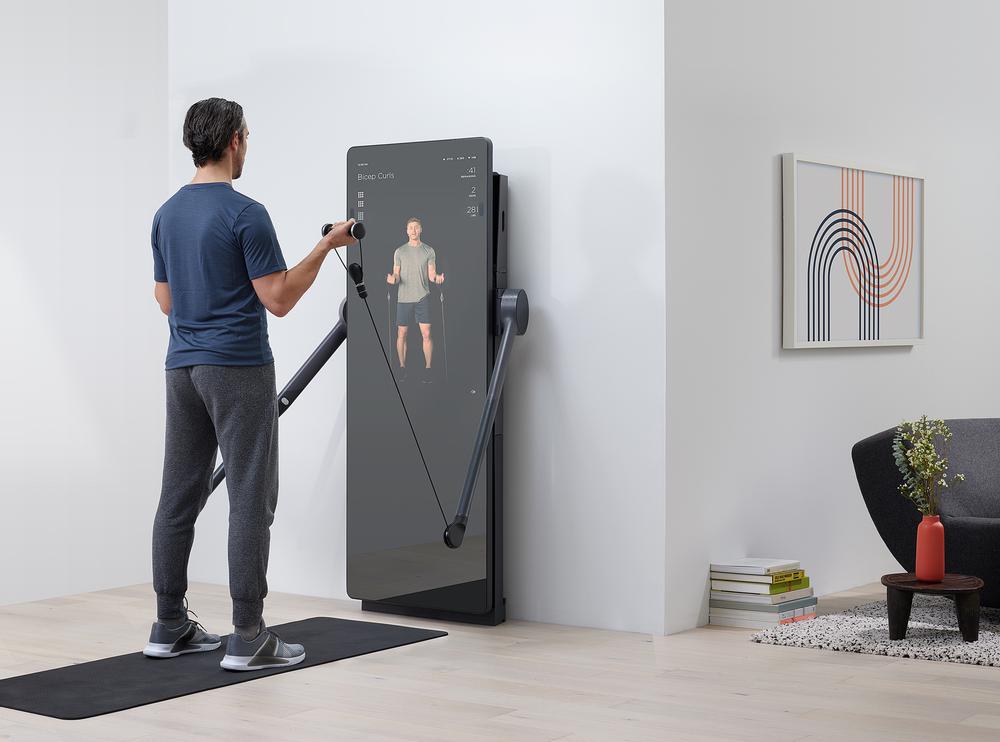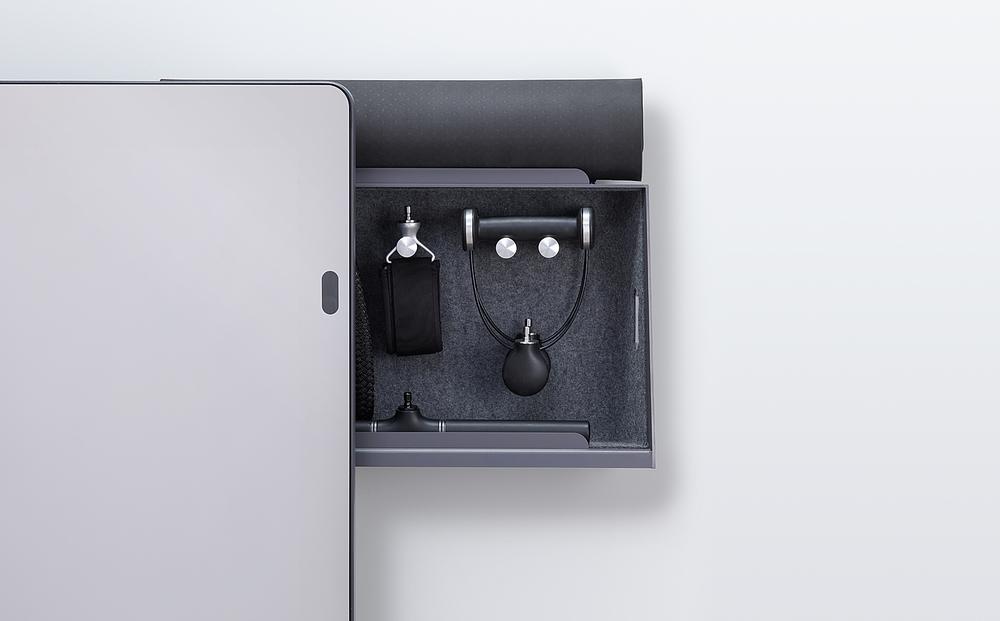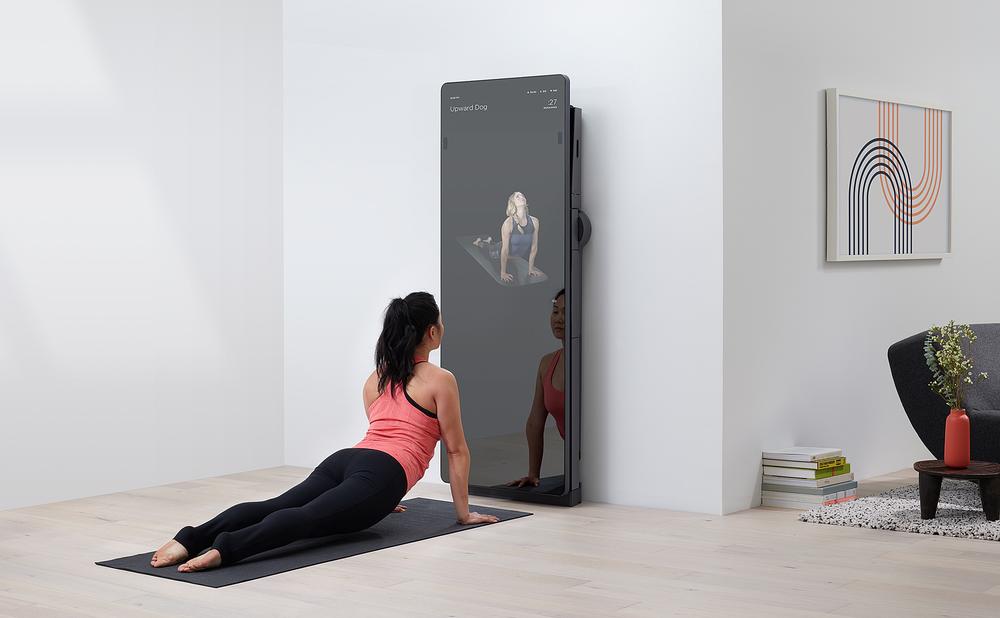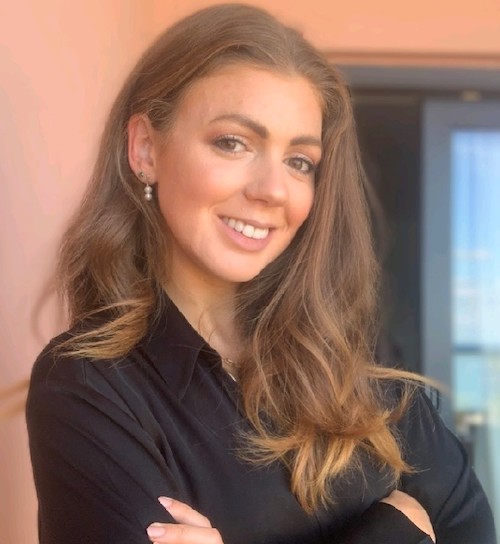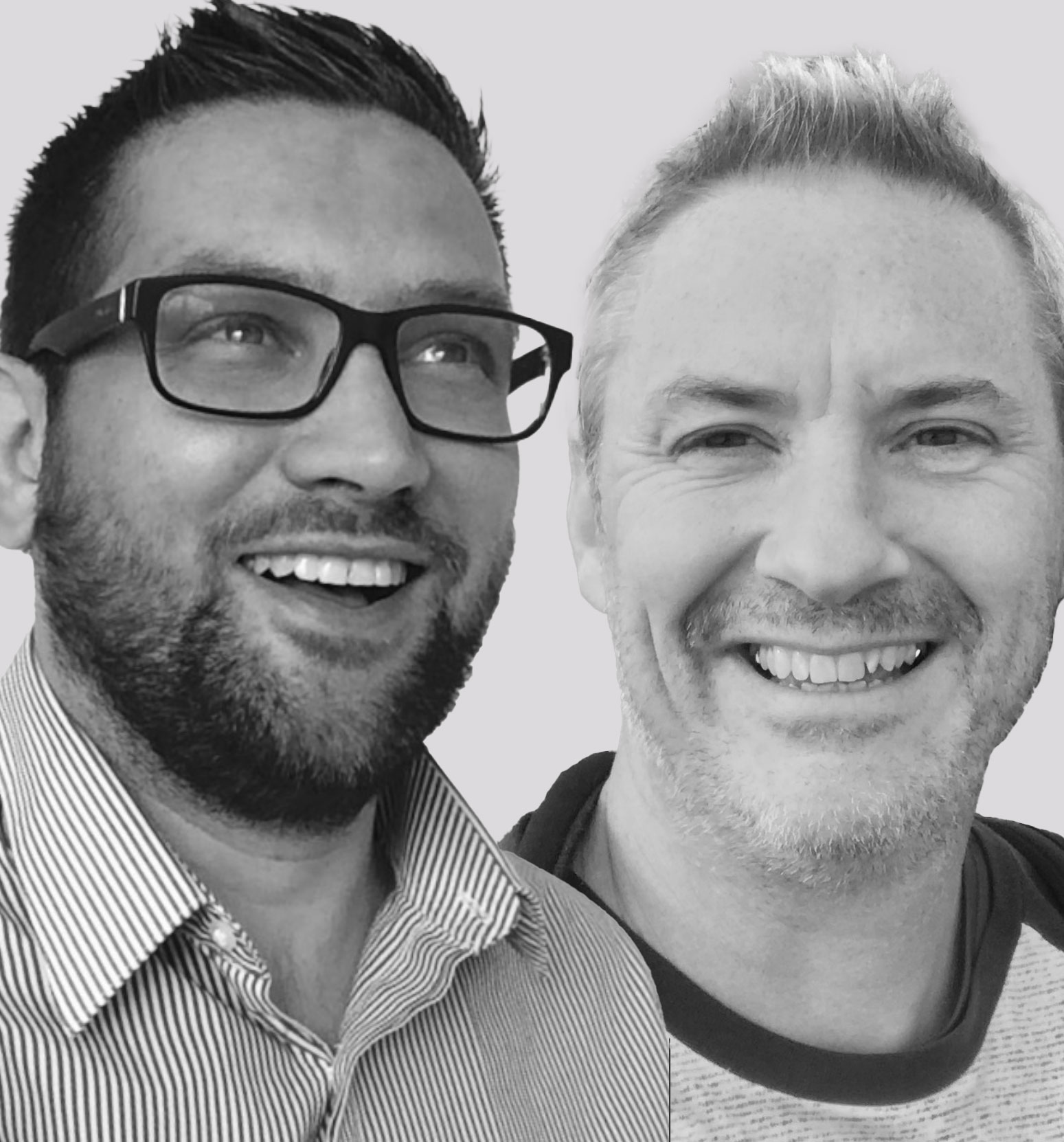Where did the idea for Forme Life come from?
Ward: I had started working for myself and had become really busy – I wasn’t making it to the gym, so I started working out at home with a trainer. I realised that with all the equipment I had around, and my trainer’s schedule, there was probably a better way to do this.
I thought about a weight machine that was hidden in the wall and which had instruction and measurement and modification. And then I also thought about adding other disciplines, because I get bored if I’m only doing one type of activity.
How did the two of you come to work on this together?
Ward: I started to do some R&D and then I started looking for an industrial designer. A friend of mine introduced me to Yves and he was really excited right away. He’d wanted to do something in wellness and health for a while.
Yves had worked with Nike making gym equipment that turned into office furniture and vice versa, so he’s always been interested in this concept of transformation. Everything in his house sort of disappears into the walls when it’s not being used, so he was the one who had the idea of turning it into a mirror – both functionally, to be able to see yourself while working out, which is important for form and technique, but also to obscure the fitness equipment when you’re not using it.
Béhar: I personally felt very connected, both to the problem and to the possible solution of Forme Life. I’d been training for 20 years myself and I could see that a solution for the home was not available, and that great design and user experience would make a tremendous difference in a project like that.
Tell us about the development process over the last four years
Ward: There were a lot of different pieces to get right. On one hand we were creating a new type of resistance machine, and so that involves sourcing hundreds of custom parts, finding the right manufacturers and the partners to do it.
To create interesting shapes in our design we partnered with a bike manufacturer – there are a lot of similarities to an electric bike, such as bent metal, cables, motors, etc.
And then the screen is effectively a six foot tablet, so developing the product from scratch took time, lots of testing and millions of cycles.
The most cutting edge technological advances have been around artificial intelligence – the algorithms involved with getting the machine to spot the weights, as well as extracting skeletal pictures from the cameras in order to provide feedback on form.
Béhar: Initially, we were looking at a set of standard components, a screen that was horizontal, and the mechanical exercise attachments. I think the big ‘a-ha’ moment was when we had the idea that a mirror would be the best way for somebody to learn – when people watch themselves they can self-correct.
Creating one big seamless, tall, portrait-format mirrored surface was really the big switch for a better solution for how to integrate all these components within an environment like the home.
How are machine learning and AI used?
Ward: It’s used in the selection of weight and providing a certain amount of resistance – Forme Life determines the right weight for you based on your past performance and, if you’re using a wearable, your stress levels, recovery, sleep, etc. We take into account a number of data sources to determine what weight you should be using, and then as you’re working out, whether you need assistance.
The machine learning or artificial intelligence component is largely taking data, processing it and providing feedback.
On the computer vision side, we’re extracting 3D models of you and your movements using a neural network that works in the same way as autonomous vehicles use cameras to recognise objects and compare these images to what is expected and then provide feedback on that.
So it’s the same technology that you’re seeing in other places, but repurposed for fitness.
Who is your target audience?
Ward: It runs the gamut, across demographics, but probably the most common characteristic of our audience is someone who’s short on time.
Working out at home is hands down the most efficient way, and having on-demand content is obviously where everything is headed from a service perspective – like Netflix or Uber. Content that fits into your schedule.
So I think it’s someone who’s really looking for efficiency and time saving, but then you get the added benefit of world class instruction, which you can’t always get. Depending on where you live, the variety might not be available to you.
So it’s also someone who’s looking for inspiration and variety of content.
Most likely, they’re between 35 and 55 years old, married with kids and living in a suburb.
How did you decide what fitness equipment to include with the Full Studio?
Ward: We thought about what everyone would use and what fits easily, and that’s the core accessories – handles, rope, the short bar, ankle straps, yoga mat. These are easy to store and put out of the way.
When it came to add-ons, we offer things like a bench – which we made so it can fold and fit under your furniture or lean up against the wall – and a long bar. However, these may not be what every user wants. I sort of think about my Dyson vacuum and the 10 attachments that it came with, and I don’t use most of them! Most of them are just a bunch of plastic that sits around, and to me that seems really wasteful, so that’s part of the reason why we separated these options out.
Béhar: The important thing there is that people tend to have multiple different activities that they like to do. Forme Life is more than a single-activity piece of equipment; the type that tends to just lay around the house as people lose interest or move to other things.
By providing multi sports or multi activities, we can reach different members of the family and we can also let our users expand their curiosity and try new things, which we think is important, both in terms of physical workouts, to have a variety, as well as exploring newer types of activities, such as meditation.
How is celebrity trainer Harley Pasternak involved?
Ward: I was talking about Forme with a friend one day and he said, “you need to meet Harley Pasternak”.
I explained the concept and Harley said he’d been thinking about something like this for a long time. He’s been very helpful in thinking about how to train people, the accessories, making sure that everything is correct, and developing the content.
Harley’s a no BS, no fad trainer, which I like. He believes in balanced diets, walking, mobility, and getting enough sleep. He has strong beliefs on how to keep people healthy. He’s helpful in every regard. And his relationships in the industry are unparalleled. His title is chief fitness advisor, but it really should be chief fitness guru!
Will you adapt the Forme Life for international markets?
Ward: I think we will, eventually. From a hardware perspective, we need to go through a separate set of certifications for the different voltages that are used internationally, and we plan on doing that. We’ve had an incredible amount of interest internationally.
I lived in London for 12 years, we have a lot of investors there, and friends, and there’s a lot of demand from consumers there, so we are focused on international, probably sooner than other brands, is my guess.
Do you see this product being utlised in environments outside of the home?
Béhar: From the very beginning we understood that some of our users are transient, and will be travelling and in hotels, and so having Forme Life in those places would also make sense. I know that as I travel, usually my exercise declines. But if I can continue with the same trainers, the same workouts and the same routine while I’m on the road, that would be an ideal situation.
Ward: Harley is the global fitness advisor for Four Seasons Hotels, and we’ve had a lot of interesting conversations with them about putting the product into their rooms. That’s obviously taken on a lot more importance these days when people are concerned about the safety of gyms and working out in public places.
Are there any other Forme Life products or models in the works?
Ward: I think we have such a timeless design that this product will fit into the home for a long time. The exterior doesn’t need to be changed, but what’s on the screen will, and that can be updated remotely on a regular basis, just like your phone.
We made specific technology choices with longevity in mind. We have a 4K resolution screen, unlike the competition, who largely selected 1080. This ended up being a better experience, but the main reason we did it was for technological obsolescence. We saw how poor 1080 looks already, and will continue to be in the future. We tried to be as future-proofed as possible.
Béhar: We’re already thinking about software updates that use the existing hardware within the units. For example, to do more with the cameras, to allow the AI in Forme Life to correct your form. So the updates and upgrades that we see happening are about using the system that we’ve built to its full capacity, which could be very significant with the skeletal recognition and form adjustment.
What’s the future of home fitness?
Ward: Home fitness has been around maybe since the 80s and Jane Fonda, and I think it’s always been a bit of a trade-off between experience and convenience.
Traditionally, it’s more convenient to be at home, but going to a boutique or the gym could be a better experience.
The advent of streaming technology, which Peloton took advantage of first, just six or seven years ago, made the experience at home not as much of a sacrifice and potentially even better.
We’re still at the very beginning of this process, and what you’ll see with people working from home and other digital transformation drivers in the fitness space.
It was already happening and it was growing, but it was still a small part of the market. COVID-19 has accelerated that.
The great thing is, it’s not just a substitute for a gym membership. People are starting to work out for the first time as a result of the convenience and cost efficiency. So it’s an enabling technology as well, in addition to just shifting where the activity is occurring.








